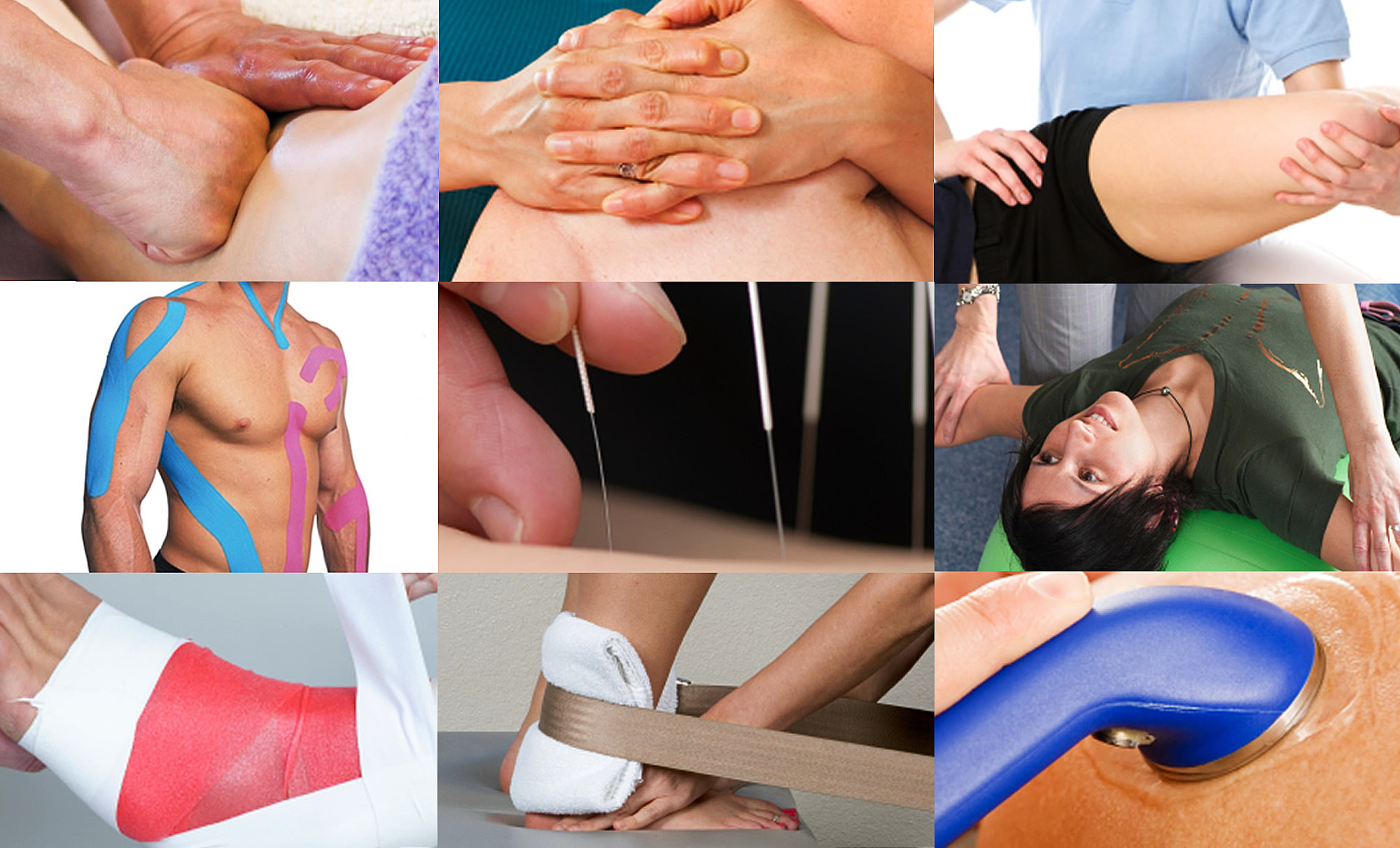Taping and strapping
Strapping and taping techniques can help limit and prevent excessive or abnormal joint movement, improve the proprioceptive mechaism in the joint, help support unstable joints, and to secure protective pads and dressings.
Strapping and taping techniques are some of the most important and most visible skills a sports therapist can have.
The role of tape is to limit the range of joint movement in an injured joint and to prevent excessive or abnormal joint movement. Also, the tape should provide support to the muscles surrounding the joint that may be under additional strain, e.g. due to the ligament injury.
Strapping and taping techniques is thought to improve the proprioceptive mechanism. For example, if a taped ankle starts to turn-over during a jump, then the tape will restrict this and inform the body that it needs to contract the muscles to prevent the movement to the ankle joint.
Strapping and taping is also used to protect unstable joints where repeated or severe ligament damage has resulted, causing the joint to be loose. It is also used to secure protective pads and dressings.

